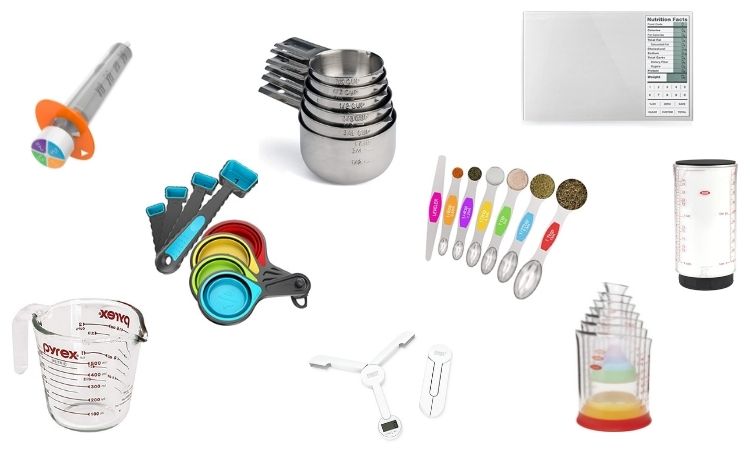Every carbohydrate counts for my child’s blood sugar to stay in range. Detailed are tips for measuring carbohydrates to obtain accurate carbohydrate counts.
Types of Measuring Cups / How to Measure / Measuring on the Go
Types of Measuring Cups
It is important to use the right measuring tool to accurately measure ingredients to get an accurate carb count. The type of measuring tool used is based on if the ingredient is wet or dry. If a wet measuring cup is used to measure dry ingredients the measurement will be incorrect and might result in an undesired blood sugar high/low.
- Wet – used to measure liquids. Measure items like juice, milk, or applesauce.
- Beaker – works great when measuring smaller liquid/wet amounts. Measure items like maple syrup, juice, or honey.
- Sticky – perfect for measuring liquids that are more solid. Measure items like peanut butter, yogurt or honey.
- Oral Syringe – helpful when measuring precise amounts of a wet ingredient to avoid over-treating a low. Also helpful for dispensing liquids into a sleeping child’s mouth. Measure items like maple syrup, juice, or cake gel.
- Dry – used to measure dry/non-liquid ingredients. Measure items like cereal, dried fruit, or nuts.
- Measuring Spoons – smaller measuring tool that can measure wet or dry ingredients. Measure items like sugar, maple syrup, or glucose powder.
- Food Scale – a food scale measures wet, dry or hard to measure ingredients. A food scale is helpful for measuring foods that do not fit perfectly into measuring tools. Most scales measure in ounces or grams and have a tare feature. The tare feature allows for subtracting the weight of the container holding the wet/dry ingredient. Also, look for a digital scale that has food codes for carb counts on common foods based on weight.
How to Measure Carbs
- Wet Ingredients – using a flat surface, add the liquid to the desired measure marking. Wait for the liquid to stay still, move your eyes to the same level as the measuring cup and make sure liquid level is at the desired mark (align the bottom of the curved surface [called a meniscus] with the markings on the measuring cup).
- Dry Ingredients – spoon/scoop ingredients into the measuring cup. Level off the top of the measuring cup with the back of a knife or other flat surface.
- Measuring Spoons – scoop ingredients into the measuring spoon. Level off the top of the measuring spoon with the back of a knife or other flat surface.
- Food Scale – every scale is different so refer to your scale’s manual. Most scales:
- Turn on the scale.
- Choose the gram or ounces option (look at the food’s nutritional label to determine which option to choose).
- If using a container place the cup/bowl/plate on the scale and tare the weight of the container.
- Place/pour/scoop/spoon the ingredient into the container or place the food directly on the scale.
- Calculate the carbohydrates based on the weight of the food item and the nutritional label serving size information.
Measuring Carbs when Traveling
Products that I have found that work best when traveling to count carbs:
- Folding food scale
- Collapsible measuring cups/spoons
- Water bottle with ounce markings
- Calorie King book provides carb counts for most food items including restaurants/fast food
